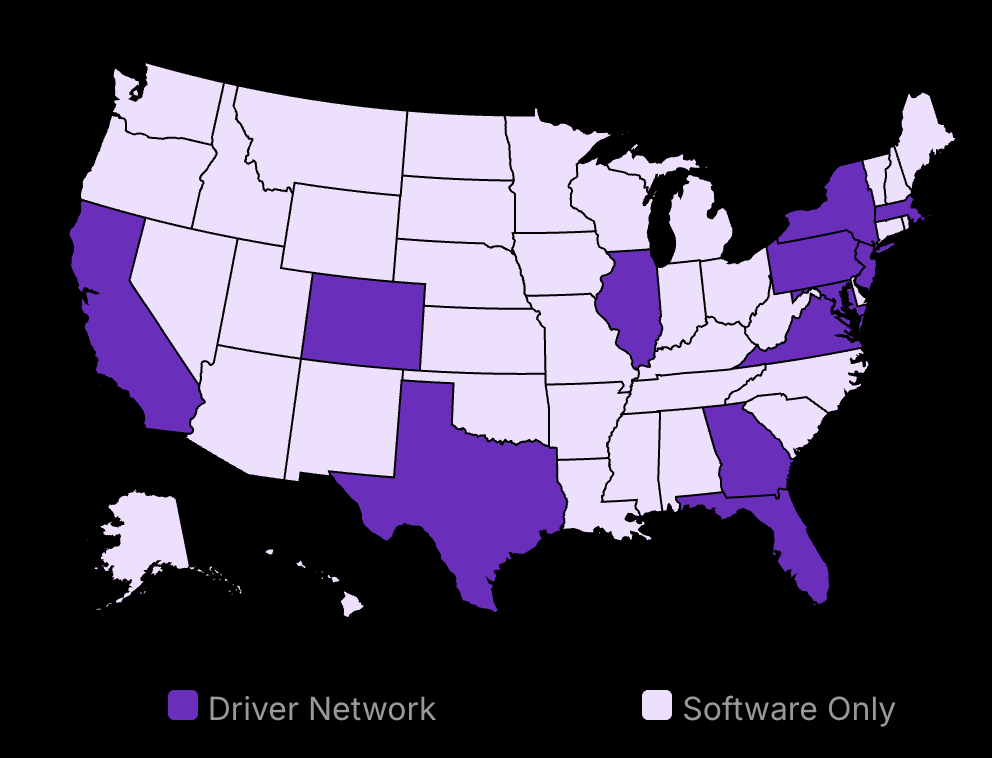The business world changes fast. The digital business models and tools that gave companies an edge yesterday are basic requirements today. By 2025, they might be completely outdated. Understanding the various structures and strategies shaping commerce today is crucial for staying competitive. For those interested in a deeper dive, exploring the different business model types that are primed for success in 2025 can provide valuable insights. This detailed overview highlights how firms are innovating and adapting to market demands and technological advancements. Check out this comprehensive guide on the types of business models to better inform your strategic planning.
For anyone looking to stay ahead, understanding the evolving business model types for 2025 is essential. These models reflect the shifting priorities and innovations businesses must adopt to remain competitive in an increasingly digital marketplace.
I’ve spent the last decade watching promising technologies rise and fall. Some became essential while others disappeared without making an impact. The difference? Timing and practical application.
As we move through 2025, digital transformation isn’t just continuing—it’s speeding up. The businesses that thrive will be those that spot valuable trends early and implement them thoughtfully.
What’s different this year is how these technologies combine and build on each other. AI isn’t just a standalone tool anymore—it’s enhancing everything from customer service to cybersecurity. Data analytics now powers decision-making across entire organizations, not just marketing departments.
The most successful companies I work with aren’t chasing every new technology. They’re carefully selecting tools that solve specific problems in their business. They understand that digital transformation isn’t about having the newest toys—it’s about meaningful improvements to operations, customer experience, and profit margins.
This guide outlines the most promising digital business trends for 2025. I’ve focused on developments with real staying power and practical applications. Some might surprise you. Others might confirm what you’ve already noticed. All of them represent opportunities for growth if approached correctly. Exploring real-world applications can provide valuable insights into how these digital trends reshape business strategies. For those interested in practical illustrations, examining various business model examples in action offers a clear perspective on how innovation translates into success across industries.
Delving deeper into these business model innovations can inspire strategic pivots and empower leaders to adopt tactics that resonate with their unique market contexts. For those seeking actionable insights, exploring detailed real-world business model examples provides a wealth of practical knowledge on leveraging emerging trends effectively.
The future is already here—it’s just unevenly distributed. Let’s look at where the smart businesses are going in 2025.

Metrobi drivers are rated 4.97 out of 5
Trusted by local businesses for:
- Background-checked professionals
- Specialized in business deliveries
- Same drivers for consistency
- 4.97/5 average delivery rating
Top Emerging Digital Technology for Business Growth in 2025
New AI systems are reshaping how businesses operate in every sector
Data analytics tools now provide clear predictions businesses can act on
Better security systems protect companies from evolving digital threats
1. AI Innovations in Business
The business world in 2025 looks very different from just a few years ago, primarily because of artificial intelligence. AI has moved from a nice-to-have technology to an essential business component.
AI Market Growth: By 2025, the global AI market is valued at over $600 billion, with a projected 5x increase over the next five years.
What makes today’s AI systems special is their ability to handle complex tasks that previously required human judgment. For example, customer service AI can now understand context, emotions, and resolve issues without human intervention. Manufacturing companies use AI to predict equipment failures before they happen, saving millions in downtime costs. Financial institutions employ AI for fraud detection that catches suspicious patterns human analysts might miss.
This adoption isn’t just happening in tech-focused companies—traditional industries like agriculture, construction, and healthcare have integrated AI into their core operations.
AI Business Priority: 83% of companies claim that AI is a top priority in their business plans.
Productivity-Boosting AI Tools for Customer Relationship Management
The most effective AI tools in 2025 focus on automating routine work while enhancing human capabilities. Document processing systems now extract, categorize, and summarize information from thousands of pages in minutes. Project management AI tracks progress, identifies potential bottlenecks, and suggests resource allocations. Sales teams use AI platforms that analyze customer interactions to recommend the best approach for each prospect.
Even creative work has been transformed by generative AI. Marketing teams use these tools to create personalized content at scale, testing dozens of variations to find what resonates with different audience segments.
2. Advanced Data Analytics
In 2025, the line between data analytics and artificial intelligence has blurred. Modern analytics platforms don’t just show what happened—they predict what will happen next and recommend actions. The integration of these technologies creates systems that continuously learn from new data and improve their predictions.
The most significant change in data analytics is how accessible advanced capabilities have become. Non-technical business users can now ask complex questions in plain language and receive visual answers with supporting evidence. This democratization of data has pushed decision-making down organizational hierarchies, with frontline workers making informed choices that previously required management approval.
Data Analytics Market Expansion: The global data analytics market size is estimated to grow by USD 288.7 billion from 2025 to 2029.
This investment has produced analytics platforms that go beyond standard business intelligence. These systems connect previously isolated data sources—combining internal company data with external information about markets, competitors, and economic trends—to provide a complete picture for decision-makers.
Tools Enhancing Analysis Capabilities
The current generation of analytics tools stands out for their ability to handle unstructured data. They process text from customer reviews, images from social media, and voice recordings from service calls—turning this messy information into structured insights. These systems identify emerging trends months before they would appear in traditional metrics.
Real-time analytics has also matured, with businesses monitoring key performance indicators as they change. Retail companies track inventory, sales, and customer behavior minute-by-minute, adjusting pricing and promotions automatically. Financial services firms analyze transaction patterns instantly to detect fraud or identify investment opportunities that might last only hours.
3. Next-Gen Cybersecurity Measures
As businesses become more digital, the threat landscape has grown more dangerous. Cybersecurity in 2025 faces sophisticated attacks that combine multiple techniques and target specific organizations. Traditional security approaches that relied on known patterns can’t keep up with these evolving threats. This challenge has pushed businesses to adopt new security technologies that use behavioral analysis and artificial intelligence.
The shortage of cybersecurity professionals remains a problem, with organizations turning to automation to fill the gap. These AI systems monitor networks continuously, detecting unusual patterns that might indicate an attack, and can respond automatically to contain threats before they spread.
This growth has produced security systems that adapt to new threats without human intervention, learning from attacks on other organizations to prevent similar breaches.
Emerging Threat Landscape
The most concerning cybersecurity threats in 2025 include:
Supply chain attacks that compromise trusted software providers
Deepfake social engineering that uses AI-generated video and audio for convincing impersonations
Zero-day exploits that target previously unknown vulnerabilities
Ransomware-as-a-service operations that make sophisticated attacks available to non-technical criminals
Generative AI Cyberattack Concerns: 85% of cybersecurity professionals attribute the increase in cyberattacks to the use of generative AI by bad actors.
These threats require new defensive approaches that focus on resilience rather than just prevention. Organizations now assume breaches will happen and design systems to limit damage, recover quickly, and continue operations during attacks.
Security Implementation Strategies
Successful companies have moved beyond perimeter-based security to adopt zero-trust architectures that verify every user and device, regardless of location. This approach requires continuous authentication, least-privilege access controls, and network segmentation that prevents potential breaches.
Security has also shifted left in the development process, with organizations building protection into applications from the beginning rather than adding it later. Automated security testing identifies vulnerabilities during development, and security requirements guide design decisions from the start.
The technology landscape for businesses continues to evolve rapidly, with the most successful organizations finding ways to integrate these three key areas—AI, data analytics, and cybersecurity—into comprehensive digital strategies. By focusing on these emerging technologies, companies position themselves for growth while protecting against increasingly sophisticated threats. The businesses that will thrive in 2025 and beyond are those that view technology not just as a cost center but as a strategic asset that drives innovation and competitive advantage.
Future of eCommerce in 2025: Key Innovations
Advanced AI and AR technologies are reshaping how customers shop online
Sustainable practices and voice commerce are becoming essential for brand success
Seamless omnichannel experiences are driving customer retention and loyalty
The eCommerce landscape is changing fast. What worked yesterday won’t work tomorrow. As we move into 2025, businesses face new challenges and opportunities in the digital marketplace. Let’s examine the key innovations reshaping online retail.
1. Personalization at Scale
Yet, most businesses struggle to implement truly effective personalization strategies. The gap between what customers expect and what businesses deliver is widening.
In 2025, personalization isn’t optional—it’s expected. Advanced AI algorithms now analyze customer behavior across multiple touchpoints to create detailed preference profiles. These systems track browsing patterns, purchase history, and engagement metrics to deliver customized product recommendations and content.
Personalization Business Impact: 89% of marketing decision-makers consider personalization essential for their business’s success over the next three years.
The most effective personalization strategies operate on three levels. First, they segment customers based on shared characteristics. Second, they create dynamic content that adapts to individual preferences. Third, they use predictive analytics to anticipate future needs before customers themselves recognize them.
Tools Enabling Advanced Personalization
The technology powering personalization has made significant leaps forward. Tools like Dynamic Yield and Qubit use machine learning to test thousands of content variations simultaneously. This approach, called “automated personalization,” removes the guesswork from content creation.
eCommerce Personalization Adoption: 74% of eCommerce companies have implemented website personalization programs.
For smaller businesses, platforms like Klaviyo and Klayvio integrate with existing eCommerce systems to deliver personalized email campaigns based on customer behavior. These tools make advanced personalization accessible without enormous budgets.
Measuring Personalization ROI
Businesses often struggle to measure the return on their personalization investments. The key metrics to track include:
Conversion rate increases for personalized vs. non-personalized experiences
Changes in average order value among customers receiving personalized recommendations
Customer lifetime value differences between personalized and control groups
Reduction in cart abandonment rates
2. Augmented Reality AR in Online Shopping
AR technology bridges the gap between physical and digital shopping experiences. In 2025, we’re seeing AR move from novelty to necessity in certain retail categories.
AR Shopping Excitement: 72% of luxury fashion shoppers in the UK are excited to use AR for their digital shopping experience.
Home furnishing retailers like IKEA and Wayfair pioneered AR shopping with their Place apps, allowing customers to visualize furniture in their homes before purchasing. Now, this technology has expanded to nearly every product category.
Beauty brands like Sephora and L’Oréal offer virtual try-on experiences for makeup products, significantly increasing conversion rates.
Practical AR Implementation Strategies
For businesses looking to implement AR, several approaches exist depending on budget and technical resources:
Ready-made AR platforms like Shopify AR and Threekit require minimal technical expertise
WebAR solutions allow customers to access AR experiences directly through browsers without downloading apps
Custom AR development offers the most flexibility but requires a significant investment
The key to successful AR implementation lies in focusing on genuine customer problems rather than technological novelty. AR experiences should solve specific shopping pain points like uncertainty about fit, appearance, or suitability.
Measuring AR Success
Tracking these metrics helps businesses understand AR’s impact on their bottom line:
Time spent in AR experiences correlates with purchase intent
Conversion rate differences between AR users and non-users
Return rate reductions for products viewed in AR
Social sharing of AR experiences, which provides free marketing reach
3. Sustainable Digital Practices in Retail
Sustainability has moved from a marketing advantage to a business requirement.
Consumer Demand for Sustainability: 72% of global consumers are willing to pay more for sustainable products.
Digital sustainability encompasses both environmental and social responsibility aspects of online retail. This includes everything from energy-efficient website hosting to ethical supply chain management.
Leading brands are now incorporating sustainability information directly into product listings. Patagonia’s Footprint Chronicles and Everlane’s Radical Transparency initiatives allow customers to trace products from raw materials to finished goods, building trust and loyalty.
Technology Supporting Sustainable Commerce and Digital Products
Several technological innovations support sustainable eCommerce:
Blockchain solutions like Provenance and VeChain enable transparent supply chain tracking
AI-powered inventory management systems reduce overproduction and waste
Carbon footprint calculators integrated into checkout processes raise awareness and offer offset options
Digital product passports provide complete lifecycle information about products
Building Brand Value Through Sustainability
Businesses implementing comprehensive sustainability programs report multiple benefits beyond environmental impact:
Higher customer loyalty and retention rates
Premium pricing ability for sustainable products
Improved employee satisfaction and retention
Reduced regulatory risk as environmental legislation tightens globally
The key to success lies in authentic commitment rather than “greenwashing.” Consumers quickly identify and reject superficial sustainability claims.
4. Voice Commerce Evolution
Voice commerce is reaching maturity in 2025, moving beyond simple reordering to complex shopping experiences.
The technology has evolved in two key directions. First, voice assistants have become more conversational, handling complex queries and remembering context from previous interactions. Second, they’ve become more visual, with smart displays like Amazon Echo Show and Google Nest Hub adding screens to voice experiences.
For businesses, voice commerce requires rethinking product discovery. Traditional keyword-based SEO strategies don’t translate directly to voice search, which tends to use natural language queries. Companies must optimize for conversational search patterns and focus on securing featured snippet positions in search results.
Voice Commerce Implementation Strategies
Businesses can prepare for voice commerce growth through several approaches:
Developing voice apps (skills or actions) for Amazon Alexa and Google Assistant
Optimizing product descriptions for natural language processing
Creating voice-specific checkout processes that minimize friction
Integrating voice authentication for secure purchasing
Domino’s Pizza’s voice ordering system demonstrates effective implementation, allowing customers to order their usual pizza by simply saying “Alexa, order my Domino’s easy order.” This frictionless experience has contributed to significant digital sales growth.
5. Omnichannel Integration for A Better Customer Experience
The boundaries between online and offline shopping have completely dissolved in 2025.
Omnichannel Shopper Behavior: 73% of retail shoppers are omnichannel shoppers who interact with six touchpoints before making a purchase.
True omnichannel integration goes beyond simply offering multiple purchase channels. It requires unified inventory management, consistent pricing, shared customer data, and coherent brand experiences regardless of touchpoint.
Leading retailers now use physical stores as fulfillment centers for online orders, offering same-day delivery from local inventory.
Mobile apps serve as the connective tissue in omnichannel strategies, bridging online and offline experiences. Features like in-store navigation, barcode scanning for product information, and mobile checkout enhance the physical shopping experience while collecting valuable customer data.
Creating Consistent Cross-Channel Experiences
Achieving omnichannel excellence requires both technological and organizational alignment:
Unified customer data platforms that create single customer views across all touchpoints
Order management systems that provide real-time inventory visibility
Training programs that ensure consistent customer service across channels
Performance metrics that avoid channel conflict and encourage collaboration
Nordstrom has excelled at omnichannel integration by reorganizing its organizational structure around customer journeys rather than channels, eliminating internal competition between online and store teams.
The Future of Digital Marketing Integration
This growth reflects digital marketing’s effectiveness rather than novelty—companies consistently report higher ROI from digital channels compared to traditional marketing.
The question “Is digital marketing still worth it in 2025?” has a clear answer: absolutely. However, the nature of digital marketing has transformed. Success now depends on integrating marketing efforts across channels rather than treating digital as a separate strategy.
Looking five years ahead, we can expect further blurring between marketing, customer service, and product development as data flows freely between these functions. Companies will increasingly compete on the quality of their overall customer experience rather than individual marketing campaigns.
For professionals concerned about the future of digital marketing careers, the outlook remains bright but requires continuous learning. The most valuable skills combine technical knowledge with strategic thinking and customer empathy—a combination that remains difficult to automate.
Digital marketing in 2025 demands more than technical expertise. It requires understanding human psychology, social trends, and business strategy. The professionals who thrive will be those who can connect technological possibilities with genuine human needs.
How 2024 Shaped Digital Business Practices
The Great Digital Reset of 2024
The business landscape of 2024 saw a fundamental shift in how companies approached digital technology. Instead of treating digital as a separate department or initiative, organizations began embedding it into their core DNA. This wasn’t simply about new tools – it was a complete rethinking of how businesses operate.
This wasn’t incremental growth but rather a massive reallocation of resources that signaled a change in priorities. Companies no longer viewed technology budgets as expenses but as investments in survival and growth.
What’s particularly noteworthy is how this transformation played out across different industries. This cross-industry adoption shows that digital transformation is no longer the domain of tech companies but a universal business imperative.
The Widening Digital Divide
Despite the overall trend toward digital adoption, 2024 revealed a troubling pattern: the digital divide between companies widened significantly. While the leading organizations raced ahead with sophisticated digital strategies, many others struggled to keep pace.
This sobering statistic highlights how difficult meaningful digital change really is. Companies that succeeded shared several characteristics: clear executive sponsorship, cross-functional teams, customer-centric approaches, and a willingness to experiment and fail quickly. Those that struggled often approached digital transformation as a purely technical exercise without addressing the deeper organizational and cultural changes required.
Key Lessons from 2024’s Digital Transformation Efforts
The most important lesson from 2024 was that technology alone doesn’t create transformation. Companies that focused exclusively on implementing new systems without addressing processes, people, and organizational structure largely failed to achieve their goals. Success came from viewing digital transformation as a business transformation enabled by technology – not the other way around.
Data became the definitive competitive advantage. Organizations that built robust data infrastructures and developed the capacity to derive insights from that data consistently outperformed their peers. The most successful companies treated data as a strategic asset, implementing governance frameworks and building cross-functional data teams. They moved beyond simple descriptive analytics to prescriptive systems that recommended specific actions based on data patterns.
“When digital transformation is done right, it’s like a caterpillar turning into a butterfly, but when done wrong, all you have is a really fast caterpillar,” notes Tim O’Reilly, Founder & CEO of O’Reilly Media. This quote perfectly captures how true transformation requires fundamental change, not just acceleration of existing processes.
This shift from on-premises systems to cloud infrastructure provided the flexibility and scalability needed to adapt to rapidly changing market conditions. Companies that had made earlier investments in cloud infrastructure were able to pivot more quickly during market disruptions.
The Surprising Cost of Digital Hesitation
Perhaps the most unexpected finding from 2024 was the high cost of waiting. Companies that adopted a “wait and see” approach to digital transformation found themselves at a significant disadvantage. The traditional strategy of letting competitors absorb the risks of early adoption no longer worked because digital technologies scale and improve so rapidly that late adopters can’t catch up.
The financial impact of digital hesitation became so significant that it affected company valuations.
AI’s Integration into Business Core Functions
If 2023 was the year of AI experimentation, 2024 was when AI became fully operational across business functions. The technology moved from pilot projects to production environments, from specialized applications to everyday business tools.
The AI implementation approach shifted significantly from previous years. Rather than creating standalone AI initiatives, companies began embedding AI capabilities directly into their core business applications. Sales teams used AI to prioritize leads and personalize outreach. Finance departments implemented AI systems that could detect patterns indicative of fraud or financial irregularities.
What made 2024 different was the democratization of AI. New tools emerged that allowed business users with limited technical expertise to build and deploy AI solutions. The “citizen data scientist” became a reality, with marketing managers, operations specialists, and HR professionals creating AI applications specific to their needs without extensive support from IT departments.
This democratization had profound implications for how work gets done. Tasks that previously required days of manual analysis could be completed in minutes. Decisions that once relied on gut feeling became data-driven. And employees were freed from repetitive tasks to focus on more creative and strategic work.
The New Skills Imperative
The rapid integration of AI exposed a critical gap in many organizations: digital literacy. This wasn’t simply about technical training but about developing a new mindset – one that embraced continuous learning, experimentation, and comfort with data-driven decision making.
Organizations approached this skills gap in different ways. Some created internal “digital academies” offering structured learning paths for employees. Others partnered with educational institutions to develop custom training programs. The most successful companies embedded learning directly into the workflow, with just-in-time training and performance support tools that helped employees apply new skills immediately.
The skills most in demand weren’t purely technical. They included data literacy (the ability to read, understand, and communicate with data), digital collaboration (working effectively with remote teams using digital tools), and computational thinking (breaking down problems in ways that can be solved using digital systems).
Incorporating 2024 Lessons into 2025 Planning
As businesses plan for the remainder of 2025, several key lessons from 2024 should inform their strategies. First and foremost is the need to build digital resilience – the ability to adapt quickly to changing market conditions and technology disruptions. This means designing flexible architectures, establishing rapid experimentation capabilities, and creating organizational structures that can respond quickly to change.
Second is the importance of focusing on business outcomes rather than technology implementations. Successful digital initiatives start with clear business objectives – increasing customer retention, reducing operational costs, or accelerating product development – and then identify the technologies needed to achieve those goals. The questions that should drive planning are not “How can we use AI?” but rather “What business problems can AI help us solve?”
Third is the recognition that digital transformation is a continuous journey, not a destination. The companies that thrived in 2024 established permanent transformation teams and processes, acknowledging that digital capabilities need to evolve constantly as technology advances and market conditions change.
Practical Steps for 2025 Success
For organizations looking to apply these lessons to their 2025 plans, several practical approaches stand out:
First, conduct a brutal honest assessment of your digital maturity compared to industry leaders. Many companies overestimate their digital capabilities, creating a dangerous complacency. Use frameworks like the Digital Maturity Model or the MIT Digital Transformation Index to get an objective view of where you stand.
Second, identify the specific digital capabilities that create competitive advantage in your industry and focus resources there. Not all digital investments deliver equal returns. In retail, inventory optimization systems might deliver the highest ROI. In manufacturing, predictive maintenance could be most valuable. The key is to understand what matters most for your specific business context.
Third, build cross-functional digital teams that bring together technology expertise with deep business knowledge. The most successful transformations come from business and technology professionals working closely together, with shared objectives and incentives. Some organizations are creating formal “digital business” roles that bridge this gap.
Fourth, establish metrics that track both digital implementation and business outcomes. Too many companies measure only technical milestones (systems deployed, users trained) without connecting these to business results. Effective metrics link digital initiatives directly to customer satisfaction, revenue growth, cost reduction, or other business KPIs.
Finally, create feedback loops that allow for rapid learning and adjustment. Digital transformation rarely proceeds according to plan. The organizations that succeed are those that can quickly identify what’s working and what isn’t, then reallocate resources accordingly.
As Jeanne W. Ross from MIT Sloan’s Center for Information Systems Research notes, “Every industry and every organization will have to transform itself in the next few years. What is coming at us is bigger than the original internet, and you need to understand it, get on board with it, and figure out how to transform your business.” This observation captures the urgency and scope of the challenge facing businesses as they move from 2024 into 2025.
2025 Predictions: Prepare for What’s Next
Hybrid work models improve satisfaction and cut costs while expanding talent pools
Digital literacy becoming essential for cybersecurity, productivity, and innovation
1. Rise of Green Technology
The green technology sector has seen remarkable growth throughout 2024. In January, investments in sustainable tech hit record levels as businesses responded to stricter emissions regulations.
The second quarter brought significant developments in renewable energy integration for businesses. July saw a surge in AI-powered energy management systems that reduce consumption by predicting usage patterns and automatically adjusting systems.
By September, supply chain sustainability tracking became standard practice for large corporations, with blockchain-based systems ensuring transparent reporting.
Looking ahead, the global green technology market will grow substantially. This growth creates immediate opportunities for businesses to both reduce costs and meet increasing regulatory requirements.
Key Green Technologies for Business Integration
For businesses looking to integrate green technology, several tools stand out as particularly effective. Energy management systems with AI capabilities now offer plug-and-play solutions that work with existing building infrastructure.
Carbon accounting software has become more user-friendly and accurate. The best platforms now integrate with existing ERP systems to track emissions across operations, supply chains, and product lifecycles. This data helps businesses identify the highest-impact areas for sustainability efforts.
Circular economy platforms help companies find partners for waste reduction. These marketplaces connect businesses that can use each other’s byproducts, creating value from what was previously considered waste.
Meeting Eco-Friendly Goals
To effectively meet sustainability targets in 2025, businesses should focus on three key areas. First, establishing clear metrics and reporting systems. Without measurable goals and transparent tracking, sustainability initiatives often fail to gain traction. Companies should define specific, time-bound targets for emissions reduction, energy efficiency, and waste management.
Second, integrating sustainability into core business strategy rather than treating it as a separate initiative. This means considering environmental impact in all major business decisions, from product development to facility management.
Third, building sustainability skills throughout the organization. This includes training existing staff on sustainability principles and hiring specialists where needed.
The most successful businesses in 2025 will be those that view sustainability not as a cost center but as a source of innovation and competitive advantage. Forward-thinking companies are already developing products and services that help customers reduce their own environmental footprints, creating new revenue streams while advancing sustainability goals.
2. Hybrid Work Models
The evolution of hybrid work arrangements accelerated rapidly in 2024. By March, these rigid schedules began showing cracks as employee satisfaction declined and turnover increased among organizations with strict in-office requirements.
By May, forward-thinking companies shifted to outcome-based work models rather than location-based requirements. These organizations measured productivity through results rather than hours spent in specific locations.
The third quarter saw significant advances in hybrid collaboration technology. Virtual reality meeting spaces moved beyond novelty to practical application. September brought widespread adoption of “digital-first” work policies, where remote work became the default with in-person gatherings reserved for specific collaboration needs.
By December, the data was clear: companies embracing flexible work arrangements outperformed those requiring full-time office presence.
Employee Value on Work Life Balance: 83% of surveyed employees value work-life balance in their current or future jobs, even surpassing pay.
Benefits of Flexible Work Arrangements
The financial case for hybrid work has become compelling. Beyond direct cost savings, companies report significant reductions in absenteeism and improved disaster resilience.
Talent acquisition has transformed dramatically with hybrid work. This advantage is particularly pronounced for specialized roles, where the best candidates often prioritize flexibility over other benefits.
Environmental benefits have also proven substantial. Companies have found these statistics particularly effective in sustainability reporting and attracting environmentally conscious customers and employees.
Technology Supporting Hybrid Work
The technology ecosystem supporting hybrid work has matured significantly. Asynchronous collaboration tools now feature AI assistants that summarize discussions, assign action items, and follow up on deadlines without human intervention. These tools address the “meeting fatigue” that characterized earlier remote work experiences.
Security solutions for distributed teams have become more sophisticated and less intrusive. Zero-trust architectures now protect company assets regardless of work location, while employee monitoring has shifted from activity tracking to outcome measurement. This balance between security and privacy has improved employee satisfaction while maintaining data protection.
Physical workspace technology has evolved to support true hybrid collaboration. Smart conference rooms now automatically adjust cameras, microphones, and displays to ensure remote participants have equal presence in meetings. Calendar systems use AI to optimize in-office days for maximum collaboration among team members who need to work together.
Successful Hybrid Work Implementation
The most effective hybrid work models in 2025 share several characteristics. They focus on outcomes rather than processes, giving employees flexibility in how and where they complete their work as long as results meet expectations. They provide clear communication channels with established availability expectations, preventing the “always on” burnout common in early remote work arrangements.
Successful implementations also invest in creating meaningful in-person experiences. Rather than requiring office attendance for routine work that could be done remotely, they design collaborative events that build relationships and spark innovation.
Leadership practices have evolved to support hybrid teams effectively. Managers now focus on clear goal setting, regular check-ins, and removing obstacles rather than direct oversight.
3. Importance of Digital Literacy
Digital literacy has transformed from a nice-to-have skill to a fundamental business requirement in 2024. The year began with companies discovering significant skills gaps as new AI tools demanded higher technical competency from all employees.
Digital Skills Target: The European Union has set a target to ensure that 70% of adults have basic digital skills by 2025.
The second quarter saw rapid growth in digital upskilling programs.
Summer brought increased focus on role-specific digital skills. Marketing teams developed specialized capabilities in data analytics and AI-powered content creation. Operations staff learned to work with process automation tools and digital twins. Customer service representatives mastered AI-augmented support systems.
By the end of 2024, digital literacy had become a primary factor in hiring and promotion decisions. The data showed clearly that digital literacy had become as fundamental to business success as basic reading and writing skills were in previous generations.
Why Digital Literacy Is Critical
The security implications of digital literacy have become impossible to ignore. Each employee now represents either a security vulnerability or asset, depending on their digital awareness level.
Productivity gains from digital literacy are substantial. They also experience significantly less stress.
Innovation capacity depends heavily on digital literacy.
Kendra DeKeyrel, Vice President ESG & Asset Management Product Leader at IBM, states: “Companies will couple AI and automation technologies to progress 2030 sustainability goals. Organizations with ambitious targets should implement AI-powered automation capabilities, such as observability and resource management, to reduce data center energy consumption and enhance asset performance.”
Methods to Enhance Digital Skills
The most effective digital skill development approaches combine formal training with applied learning.
Peer learning networks have shown remarkable results. These networks allow employees to learn from each other’s experiences, solving real business problems while building capabilities.
Gamification of digital learning has moved beyond simple badges and leaderboards. Sophisticated simulations now allow employees to practice digital skills in realistic scenarios without real-world consequences.
Personalized learning paths have replaced one-size-fits-all training. AI-powered learning platforms now assess each employee’s current skills, identify gaps based on their role, and create customized development plans.
Resources for Continued Digital Education
For 2025, several resources stand out as particularly valuable for ongoing digital education. Industry-specific learning platforms have emerged that focus on the unique digital needs of different sectors. These specialized resources provide contextually relevant training that applies directly to daily work challenges.
Online learning marketplaces have evolved to offer more flexible, microlearning options. Employees can now access short, focused modules exactly when needed, rather than committing to lengthy courses. The best platforms include practice environments where learners can immediately apply new skills.
Internal knowledge bases have proven extraordinarily effective. These resources are most effective when they include video demonstrations and step-by-step guides created by actual users.
Certification programs aligned with business needs provide clear development paths. The most valuable certifications focus on practical application rather than theoretical knowledge.
Frequently Asked Questions (FAQs)
How are emerging digital trends in 2025 fundamentally changing traditional business models?
Digital trends are forcing businesses to integrate technology like AI and advanced data analytics into core operations, shifting towards more agile, data-driven, and customer-centric approaches to value creation and delivery.
Why is it important for businesses in 2025 to ensure their digital presence is optimized for various platforms, including devices like the Apple Watch?
Optimizing for diverse platforms, including wearables like the Apple Watch, ensures businesses can reach customers through their preferred touchpoints, maintain brand consistency, and leverage unique device capabilities for engagement and service delivery in an increasingly digital world.
What is the primary impact of AI innovations on business operations in 2025?
AI innovations are primarily impacting business operations by automating complex tasks, enhancing customer service through contextual understanding, improving decision-making with predictive insights, and boosting overall productivity. Understanding how to effectively structure and analyze your workflows is critical in this rapidly evolving digital landscape. Business Process Modeling offers a clear way to visualize, assess, and optimize these processes, helping organizations align technology adoption with operational goals. For those interested, this comprehensive guide to business process modeling elucidates the concept in straightforward terms, making it accessible for decision-makers and teams alike.
To further enhance the understanding and utilization of digital tools in your organization, exploring practical approaches to business process modeling can be invaluable. This technique provides a structured framework for mapping out workflows, identifying inefficiencies, and ensuring that AI and automation initiatives truly align with your business objectives.
How has advanced data analytics evolved to support business decision-making in 2025?
Advanced data analytics has evolved beyond historical reporting to provide predictive insights and actionable recommendations, democratizing access to complex analysis and enabling data-driven decision-making across all organizational levels.
What is a key innovation significantly reshaping customer experiences in eCommerce for 2025?
A key innovation is personalization at scale, where advanced AI analyzes customer behavior across multiple touchpoints to deliver customized product recommendations, content, and dynamic online experiences, increasing engagement and conversion rates.
Conclusion
As 2025 unfolds, new business models in the digital space aren’t just changing how we operate—they’re completely reshaping the rules. From AI that makes decisions alongside humans to AR shopping experiences that feel real, these aren’t far-off concepts but present realities, redefining the online business environment and introducing disruptive business models that challenge the status quo.
The businesses that succeed in 2025 will be those that balance tech adoption with human values—implementing advanced analytics to gain valuable insights while maintaining privacy, embracing remote work supported by video calls and live online sessions while fostering connection, and pursuing profits while practicing sustainability.
Whether you’re a chief technology officer, chief marketing officer, or co-founder, digital transformation isn’t about chasing every trend. It’s about aligning innovation with your business goals and making strategic decisions that suit your organization’s understanding of its needs. Start small: choose one trend from this guide that fits your target segments, research implementation options, and build a 90-day action plan.
In this increasingly digital world, where manual data entry is replaced by automation and contact details are shared via QR codes, success belongs to the businesses that act with intent. Whether you run an online store, a multinational enterprise, or serve other countries, staying up to date and adapting to organizational change is non-negotiable.
In the digital age, rapid innovation and emerging business opportunities are everywhere—but so is competition in a crowded market. To stay ahead, make sure your tools are optimized for all platforms, from Apple Watch to home screen widgets, and ensure compatibility with your existing systems to avoid being slowed down by legacy technology.
This guide offers a complete list of actionable trends curated with the help of industry experts and insights from large organizations that have successfully navigated transformation.
The digital landscape of 2025 rewards those who stay informed but act deliberately. The question isn’t whether these trends will impact your business—they will. The real question is: which trends will you turn into your competitive edge for future success?
Your next move matters more than your perfect plan. What digital trend will you turn into your advantage?




























